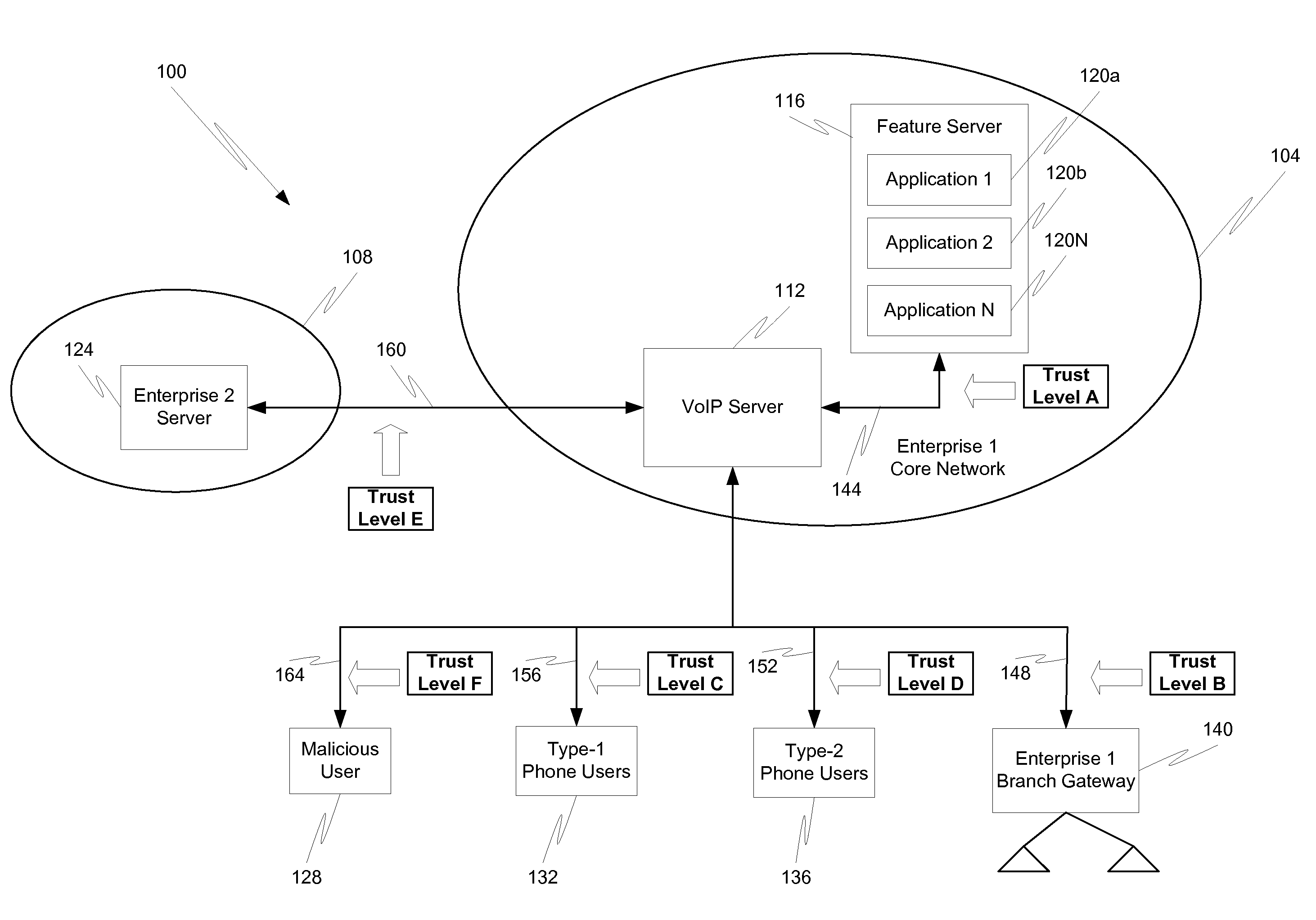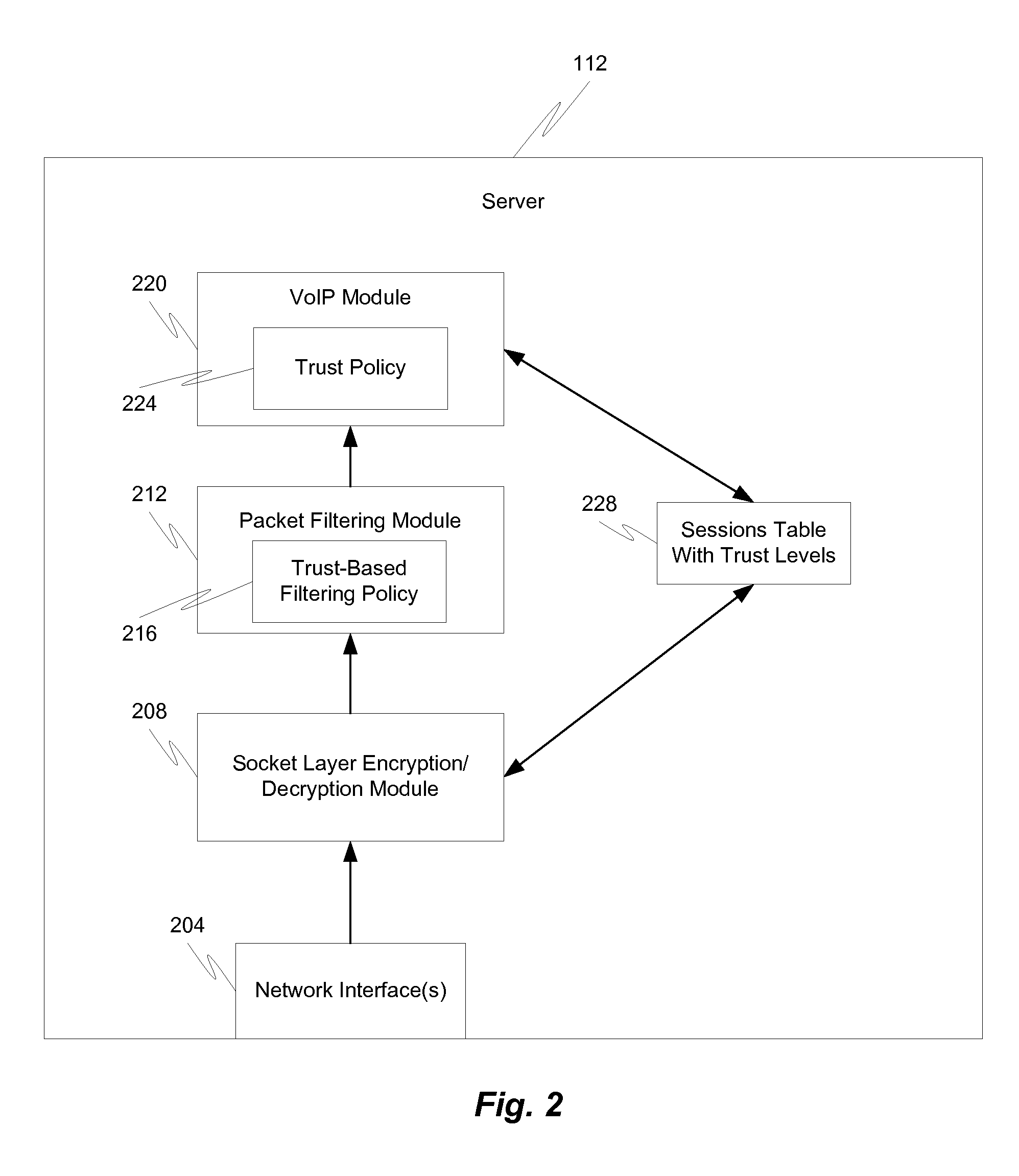Trust based application filtering
a filtering and trust technology, applied in the field of communication, can solve the problems of large overhead, limited flexibility of filtering rules, and large processing time, and achieve the effect of convenient implementation
- Summary
- Abstract
- Description
- Claims
- Application Information
AI Technical Summary
Benefits of technology
Problems solved by technology
Method used
Image
Examples
Embodiment Construction
The invention will be illustrated below in conjunction with an exemplary communication system. Although well suited for use with, e.g., a system using a server(s) and / or database(s), the invention is not limited to use with any particular type of communication system or configuration of system elements. Those skilled in the art will recognize that the disclosed techniques may be used in any communication application in which it is desirable to filter packets according to trust-based rules.
The exemplary systems and methods of this invention will also be described in relation to analysis software, modules, and associated analysis hardware. However, to avoid unnecessarily obscuring the present invention, the following description omits well-known structures, components and devices that may be shown in block diagram form, are well known, or are otherwise summarized.
For purposes of explanation, numerous details are set forth in order to provide a thorough understanding of the present inv...
PUM
 Login to View More
Login to View More Abstract
Description
Claims
Application Information
 Login to View More
Login to View More - R&D
- Intellectual Property
- Life Sciences
- Materials
- Tech Scout
- Unparalleled Data Quality
- Higher Quality Content
- 60% Fewer Hallucinations
Browse by: Latest US Patents, China's latest patents, Technical Efficacy Thesaurus, Application Domain, Technology Topic, Popular Technical Reports.
© 2025 PatSnap. All rights reserved.Legal|Privacy policy|Modern Slavery Act Transparency Statement|Sitemap|About US| Contact US: help@patsnap.com



